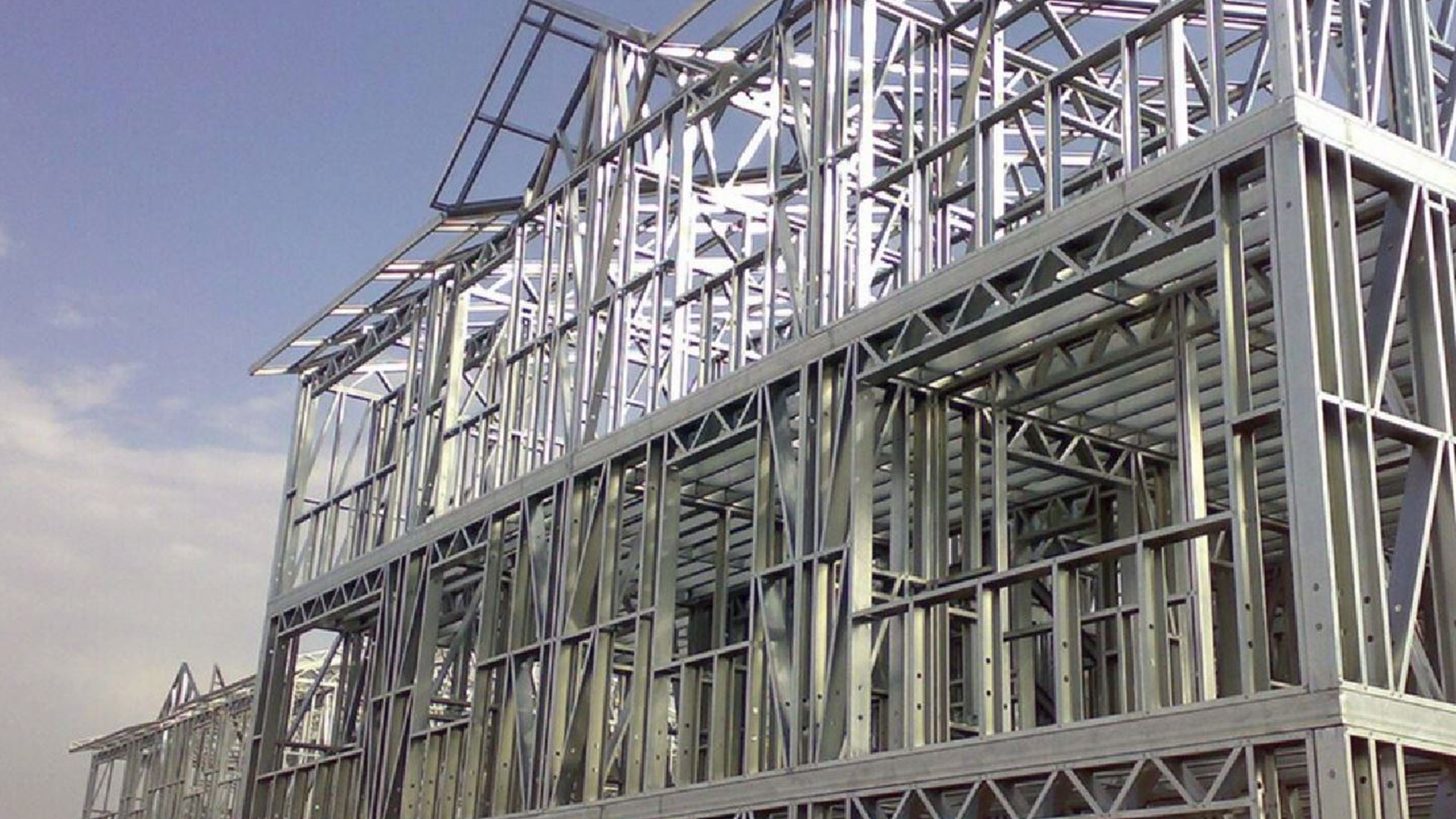Industrialised construction is carried out by producing the necessary building components in a factory, for transport and final assembly at the construction site. In contrast, in traditional construction, most of the processes and stages are carried out directly on site.
One example of industrialised construction, which is gaining ground as an alternative to traditional concrete or steel structures, is steel framing. Steel Framing is an industrialised construction system that uses as its main element a grid of cold-formed structural grade galvanised steel C-profiles and U-channels, known as Studs/Tracks. These are joined together by means of self-drilling screws and other assembled elements. They are used to create the load-bearing structure of the building, or the secondary structure for façades or prefabricated modules.
Another versatile and efficient industrialised construction system, which has gained popularity in recent years, is the use of multi-layer panels. These panels combine several layers of different materials, such as wood, insulation and fibre cement boards. The key to their efficiency lies in their prefabricated design, which allows for quick and precise installation. With integrated insulation, they help to reduce energy consumption in air conditioning. Panels are now available for the entire building envelope, including façades, roofs and even floor slabs between floors.

A powerful combination is the result of the use of both systems, multi-layer panels and Steel Framing, in an integral construction solution. It maximises the advantages of both systems: the panels provide thermal and acoustic insulation, while the Steel Framing provides the necessary load-bearing structure to support the building’s structural loads.
The modular, prefabricated construction of both systems further streamlines the construction process and reduces time and costs. In addition, at the end of the building’s service life, the materials can be dismantled and reused. In addition, building with prefabricated components minimises material waste and optimises the use of resources.
By Cristina Uchán, senior architect in the Architecture Department of Amusement Logic






